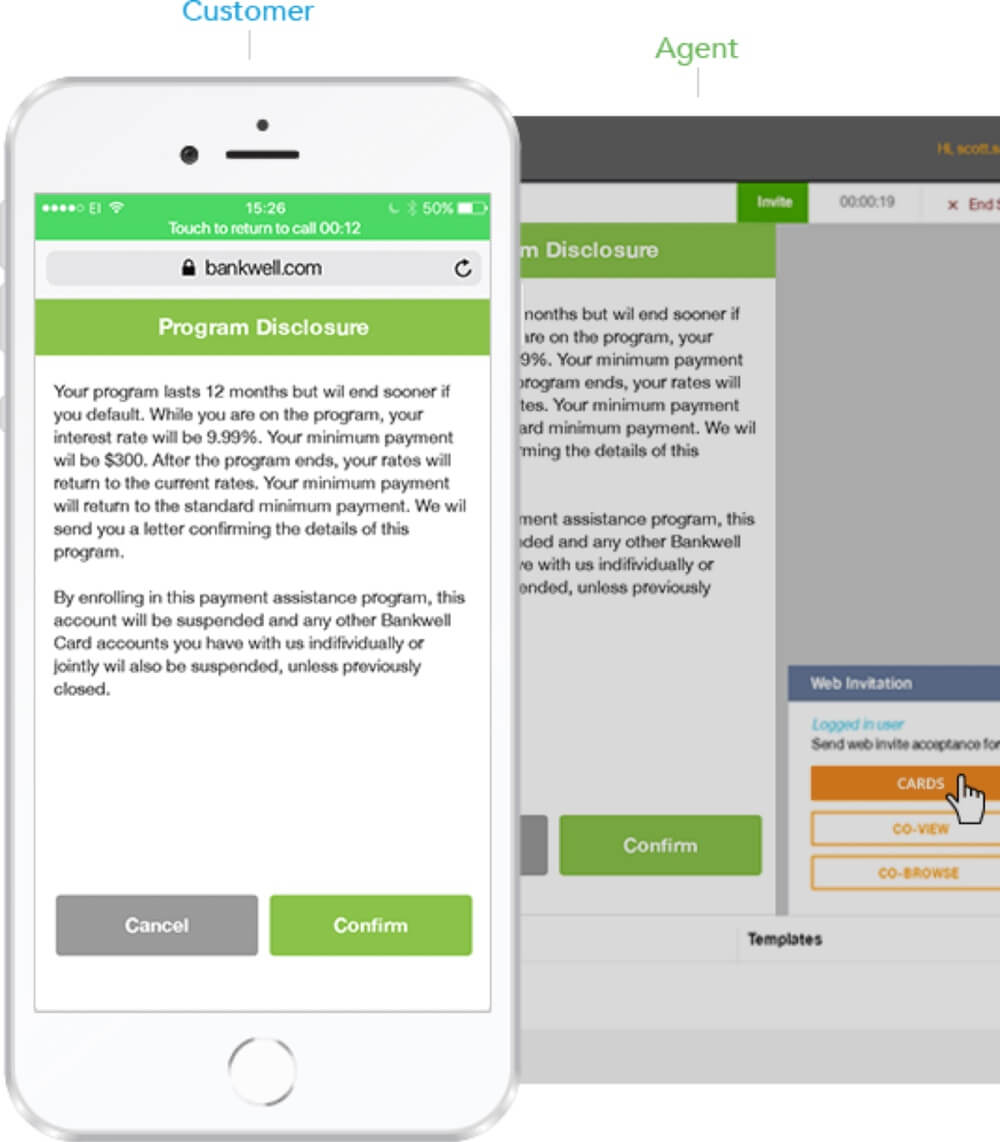


CEO at [24]7.ai and Author of ‘Age of Intent’ available now!
32 articles Follow
We currently live in a time where nearly every email starts with “I hope you and your family are safe,” and ends with “stay healthy.” The COVID-19 pandemic has changed the way we interact with each other as a community, and it is going to forever change the way businesses interact with each other.
The speed at which COVID-19 spread, and the urgency shown in various countries with lockdowns, definitely caught many people by surprise. While every company has a business continuity plan, few had considered a scenario in which all regions went into lockdown at the same time. In my 20 years as CEO, I’ve never seen anything like this. We’ve had to invent along the way and, even though we are not yet through this crisis, we are beginning to see the framework for how we must all operate in the new world.
During a crisis, the need for customer service doesn’t slow down – in fact, it increases. Communications between businesses and customers have never been more important. As soon as travel restrictions started, consumers called airlines, hotels and rental car companies to change or cancel reservations. Similarly, in the banking industry we saw inquiries on contactless payments (e.g. Apple Pay) increased 53%, while requests to stop or defer mortgage payments rose 500%. Even as call volumes are dropping, digital interactions are significantly increasing.
Since this crisis began, three key business problems have emerged from my conversations with executives:
And even though we are not yet through this crisis, some recommendations for improving customer support have become clear:
Allow me to elaborate…
Digital Channels and Automation Have Never Been More Important
One thing became clear early in this crisis -- how ill-prepared most companies are for automation. Call volumes shot up as a direct result of COVID-19. If you don’t have messaging, you pay the price. Consumers will clog your phone channels as they desperately seek information. In many cases, they are waiting two hours to speak to someone, and when you do that to a customer, you make them feel helpless. For companies who have not already deployed a digital customer service solution, either automated or staffed by agents, now is the time to quickly stand one up. Here are my key recommendations:
Geo-balancing of Capacity is Critical
While AI and automation technology is important, it is still critically dependent on humans. Most B2C businesses rely heavily on human agents, so what happens when a worldwide pandemic shuts down offices worldwide? It is important to ensure that agent capacity is spread across different geographies, with specific process level balancing as a key building block. In my business, we have deliberately based our agents in several geographies to ensure proximity to companies and suppliers, as well as for business continuity. Because we operate contact centers in the Americas, India and the Philippines, we have been able to adjust capacity in each region as new government orders were issued.
Ensuring data centers are distributed globally and enabling each to operate in a standalone capacity, delivers the redundancy required to maintain services. Use of dynamic DNS controllers to monitor client links and ensure that any failover is directed to other sites is imperative. Critical hardware components must have next day on-site support. And the habits of providing routine on-site maintenance through onsite data center operators, with the backup of local contractors on standby delivers resources when travel is restricted.
Ultimately, Contact Centers Must Evolve
Contact centers are designed around agents being in an office. Work stations are specially configured, and the workspace is designed around supervisor availability. Effective contact centers, must overcome numerous operational challenges including channel hopping (going from phone to digital channels and vice versa), availability of context from previous interactions, process complexity, training and development, frontline leadership and understanding of industry-specific challenges. These are big challenges under ordinary circumstances, but are especially critical when offices are closed and agents are working remotely.
This is a scenario that our business has been anticipating and planning for in advance of government ordered shutdowns around the world, and there are several specific steps we have taken as part of our business continuity plan. It is essential that we keep our services up and running for our clients, and there are several steps we have taken to keep contact center operations going while shutdowns are in place, while we also evaluate changes for the long term.
Enable visual sharing for voice agents and IVR – Allow voice agents to detect when a caller is online and send an SMS or Email invitation via a secure web session. Using Active Share, agents can push an invite to callers and share Active Cards securely to the caller’s mobile device. In the example below, the agent is able to visually share program disclosures with a customer instead of reading them. This speeds the interaction and allows the agent to serve more customers.

We currently live in a time where nearly every email starts with “I hope you and your family are safe,” and ends with “stay healthy.” The COVID-19 pandemic has changed the way we interact with each other as a community, and it is going to forever change the way businesses interact with each other.
The speed at which COVID-19 spread, and the urgency shown in various countries with lockdowns, definitely caught many people by surprise. While every company has a business continuity plan, few had considered a scenario in which all regions went into lockdown at the same time. In my 20 years as CEO, I’ve never seen anything like this. We’ve had to invent along the way and, even though we are not yet through this crisis, we are beginning to see the framework for how we must all operate in the new world.
During a crisis, the need for customer service doesn’t slow down – in fact, it increases. Communications between businesses and customers have never been more important. As soon as travel restrictions started, consumers called airlines, hotels and rental car companies to change or cancel reservations. Similarly, in the banking industry we saw inquiries on contactless payments (e.g. Apple Pay) increased 53%, while requests to stop or defer mortgage payments rose 500%. Even as call volumes are dropping, digital interactions are significantly increasing.
Since this crisis began, three key business problems have emerged from my conversations with executives:
And even though we are not yet through this crisis, some recommendations for improving customer support have become clear:
Allow me to elaborate…
Digital Channels and Automation Have Never Been More Important
One thing became clear early in this crisis -- how ill-prepared most companies are for automation. Call volumes shot up as a direct result of COVID-19. If you don’t have messaging, you pay the price. Consumers will clog your phone channels as they desperately seek information. In many cases, they are waiting two hours to speak to someone, and when you do that to a customer, you make them feel helpless. For companies who have not already deployed a digital customer service solution, either automated or staffed by agents, now is the time to quickly stand one up. Here are my key recommendations:
Geo-balancing of Capacity is Critical
While AI and automation technology is important, it is still critically dependent on humans. Most B2C businesses rely heavily on human agents, so what happens when a worldwide pandemic shuts down offices worldwide? It is important to ensure that agent capacity is spread across different geographies, with specific process level balancing as a key building block. In my business, we have deliberately based our agents in several geographies to ensure proximity to companies and suppliers, as well as for business continuity. Because we operate contact centers in the Americas, India and the Philippines, we have been able to adjust capacity in each region as new government orders were issued.
Ensuring data centers are distributed globally and enabling each to operate in a standalone capacity, delivers the redundancy required to maintain services. Use of dynamic DNS controllers to monitor client links and ensure that any failover is directed to other sites is imperative. Critical hardware components must have next day on-site support. And the habits of providing routine on-site maintenance through onsite data center operators, with the backup of local contractors on standby delivers resources when travel is restricted.
Ultimately, Contact Centers Must Evolve
Contact centers are designed around agents being in an office. Work stations are specially configured, and the workspace is designed around supervisor availability. Effective contact centers, must overcome numerous operational challenges including channel hopping (going from phone to digital channels and vice versa), availability of context from previous interactions, process complexity, training and development, frontline leadership and understanding of industry-specific challenges. These are big challenges under ordinary circumstances, but are especially critical when offices are closed and agents are working remotely.
This is a scenario that our business has been anticipating and planning for in advance of government ordered shutdowns around the world, and there are several specific steps we have taken as part of our business continuity plan. It is essential that we keep our services up and running for our clients, and there are several steps we have taken to keep contact center operations going while shutdowns are in place, while we also evaluate changes for the long term.
Enable visual sharing for voice agents and IVR – Allow voice agents to detect when a caller is online and send an SMS or Email invitation via a secure web session. Using Active Share, agents can push an invite to callers and share Active Cards securely to the caller’s mobile device. In the example below, the agent is able to visually share program disclosures with a customer instead of reading them. This speeds the interaction and allows the agent to serve more customers.